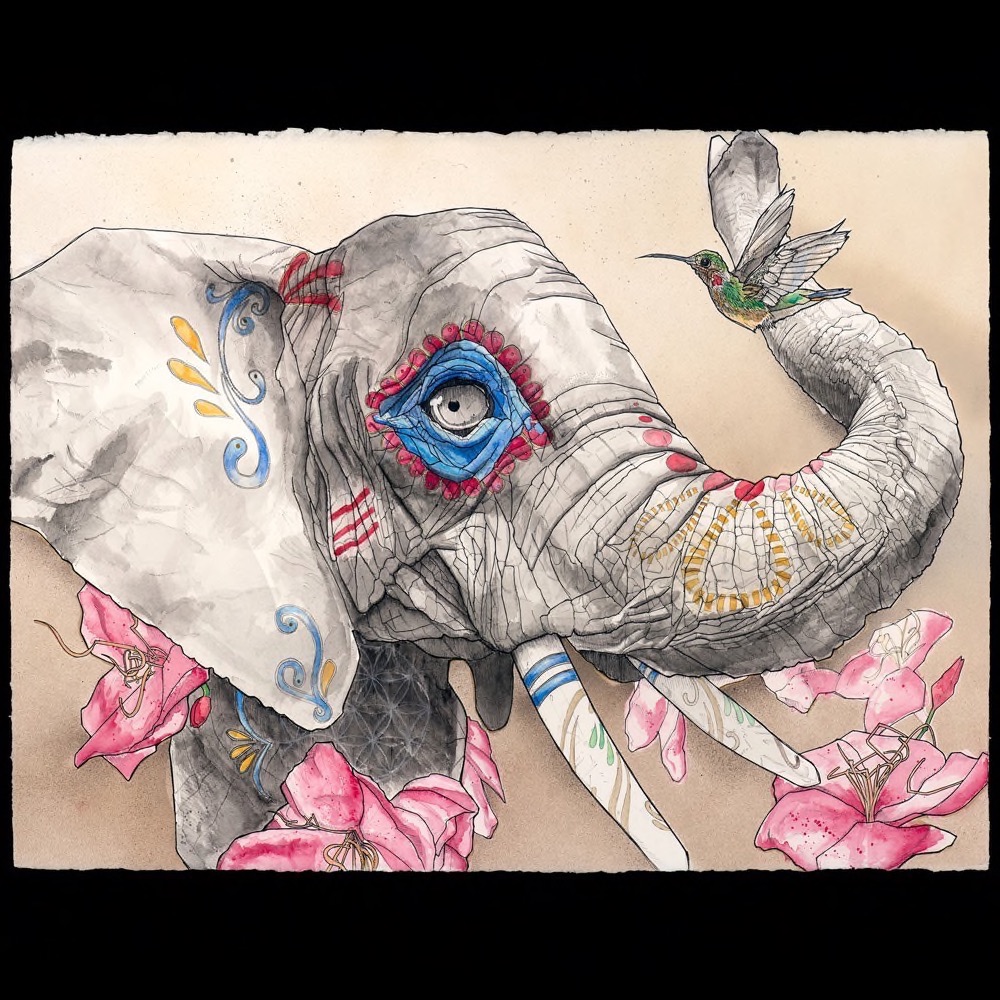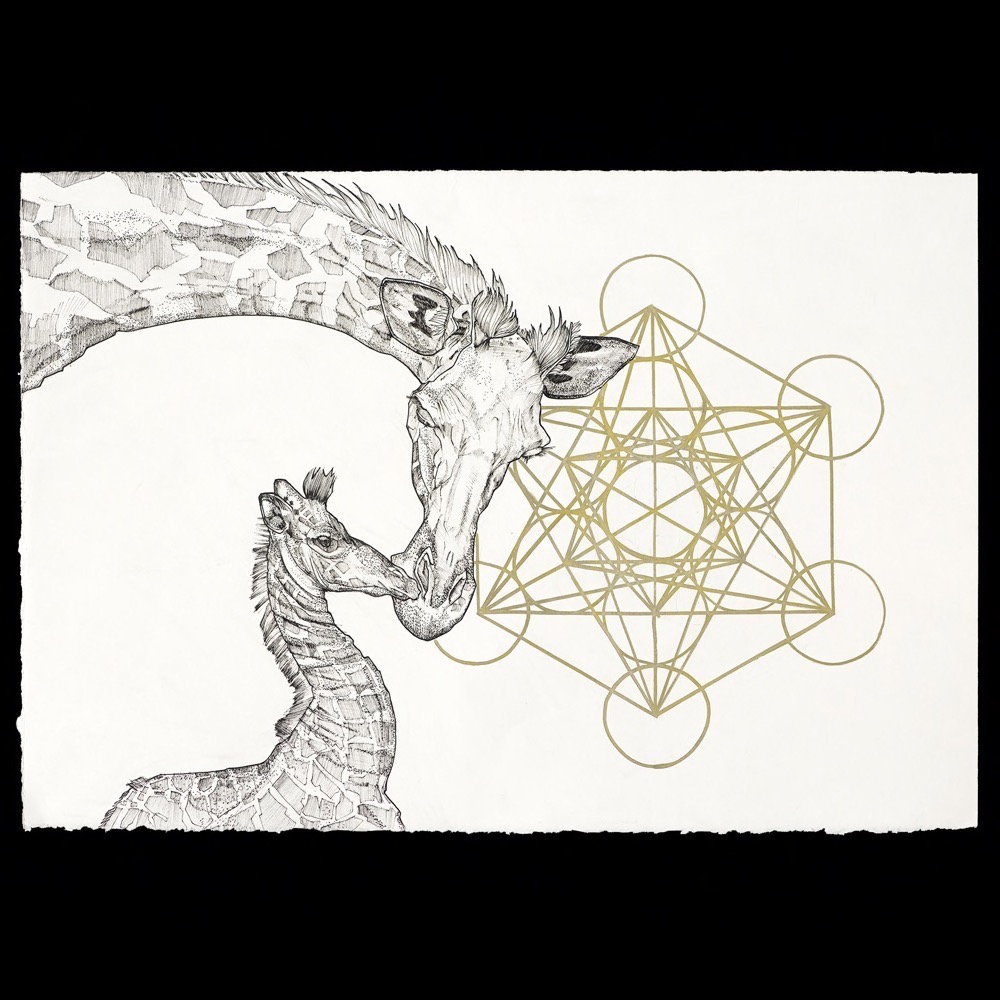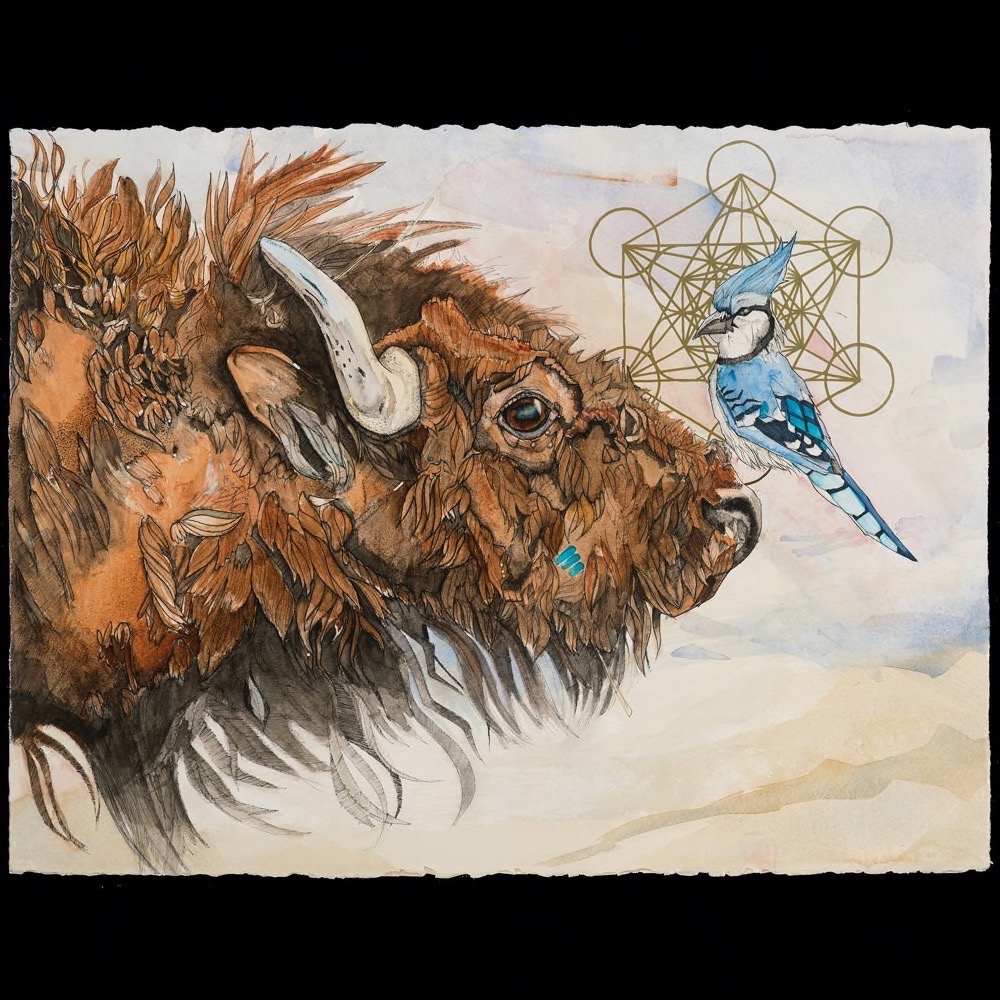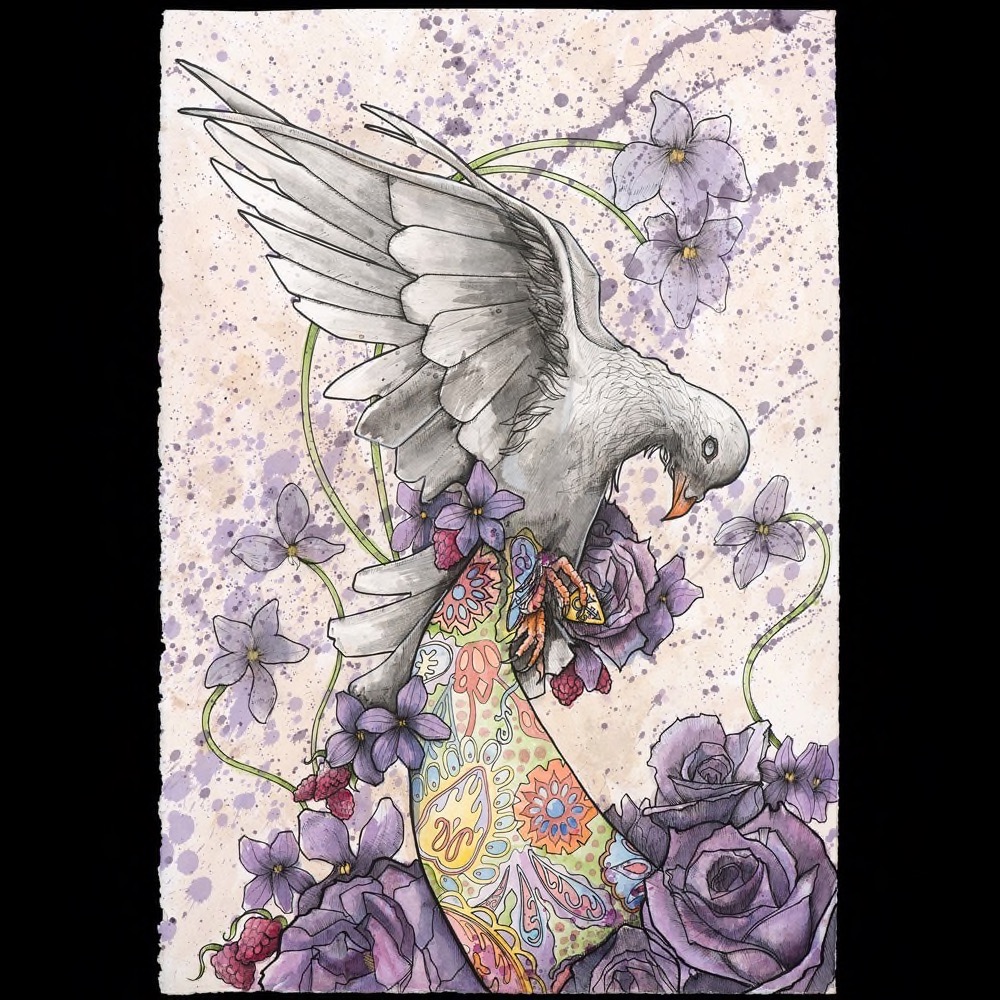Michael Rohner of Oakland, California, will bring his work of surreal and real animal totem drawings rendered in pen and ink that also incorporates a diversified spectrum of color media. A self-taught artist, Rohner (Booth 29) is among the 174 artists in this year’s Artist Marketplace at the 41st annual Utah Arts Festival. Recently he did an email interview with The Utah Review about his work.
TUR: How have you used art media forms in helping to create an holistic body of artistic work that searches for a more complete expression of your own innermost and most powerful states of emotion, inspiration, contemplation, and self-identity?
MR: Very well phrased question! For me, I’m a pen and ink artist at my core. I love lines, line work. While I’ve dabbled in painting and other expressions, it always comes back to the pen for me. I often get asked if I used to throw up graffiti, and I’ve mentioned it as one of my influences in my bio, but the answer is actually no: people knew I drew in high school, so I’d trade tips with or pick the brains of graffiti heads I knew to pick up on style pointers, but I never had the urge to get out and put things on walls. I was happy with my paper, my sketchbook. Even if heads would drag me out to a wall, I maybe did something crappy real quick and then got back to my sketchbook. It’s just how I’m wired. So, I’ve learned some spray paint techniques and I incorporate them into my works, but it’s always in service of bringing more life into my illustrations. Every medium I learn – spray paint, water color, oil pastel, marker, and so on is in service of working with the pens. One of the earlier challenges of learning to sell my work was: “how do I bring something from a sketchbook to a frame in someone’s home?” Each technique I’ve learned and continue to learn is part of this process, in growing with the pens and seeing how I can stretch my boundaries and stretch what I’m able to do with illustrations, how to keep using solid lines while adding different color mediums, seeing how they play off of each other and compliment and contrast each other, which ones most accurately represent the state of being I’m looking to convey. I’ll use 4 or 5 or 6 mediums in any given piece at this point, and having them in front of me at once allows me to dance between them as I piece ebbs and flows, and my mood shifts and as my inspiration builds going deeper into a piece of expression.
TUR: What is your training as an artist? Who do you consider your most significant influences and inspirations? Do these influences shift as you progress both in your work and life?
MR: I’m mostly self taught. I took an art class in high school, one in college, and a handful of adult continuation classes. I used to study styles of artists I liked growing up: Todd McFarland, Jim Lee, and others in the comic book scene. I would play this instructional Todd McFarland VHS over and over, drawing along and trying to emulate his fluidity and style. Salvador Dali blew my mind in how he bent the rules of the physical world. Through the years, I’d tend to meet artists who impressed upon me in one way or another – their work ethic, their technique, their general creativity, the way they organized their studio – and I absorbed all this while sharing whatever I could bring to the table. I’ve learned what I needed rather organically as each step called for it. In the art festival world, like minded artists tend to gravitate towards each other, and I like to think our experience and abilities get shared via osmosis.
TUR: Do you work full-time exclusively as an artist? Or, how do you augment your work as an artist?
MR: Yes, I do. The last part time job I held was in 2011, selling advertisement for a local magazine. I realized I was doing the same hustle for the part time job that I was for my art gig, for a percentage vs 100% when I’d sell my own work. Only the part time job was taking time and energy away from the main goal, so once that job wound itself down I walked away and dove in full time.
TUR: Do you find it easy or difficult to start new work? And, typically, how do you prepare yourself to handle both the creative and physical demands of creating your art?
MR: Both. I don’t feel like I get creative blocks per se, but I’ve found that, when I stop my studio work to go do a festival, especially if I’m gone for a length of time (say 10+ days), I tend to lose my momentum. It’s a challenge to pick back up. I like being home for stretches at a time so I can build a rhythm and routine – it’s like working out – where I crave creation and all I can think about is my art. When I go away and come back, it takes time to build up to that, as well as warming up my artistic muscles.
I need to take care of myself to be prolific. Exercise, good sleep, eating well. I used to stay up late burning the midnight oil with my art. I’m still a night owl by nature, but now I’m more likely to call it a night to get a good night’s sleep, get a hike in the next morning, and start a new day.
TUR: With regard to participating in the Utah Arts Festival, please share your feelings about being a part of this enterprise? Have you been in other festivals and do you plan to explore other festival venues?
MR: I’m honored and excited to be a part of the UAF. I’ve applied for a few years now and whooped loudly when I got accepted. Many of my peers – who I respect and appreciate – come to this show and I’m happy to join them. This will be my first time doing a show in Utah, period, so I’m looking forward to seeing how people react to my work and taking in the overall tone and atmosphere.
I’ve been doing festivals for 7 or 8 years now, ranging from fine arts shows and street fairs to music festivals and tattoo expos, art and wine fairs and more. I like seeing new cities, visiting new states and meeting different kinds of people, getting exposed to other ways of life.





